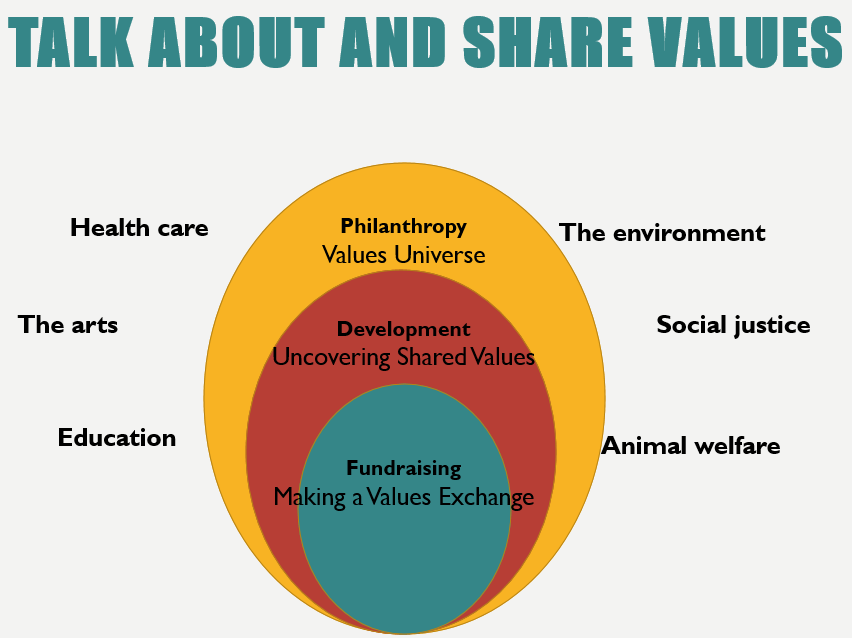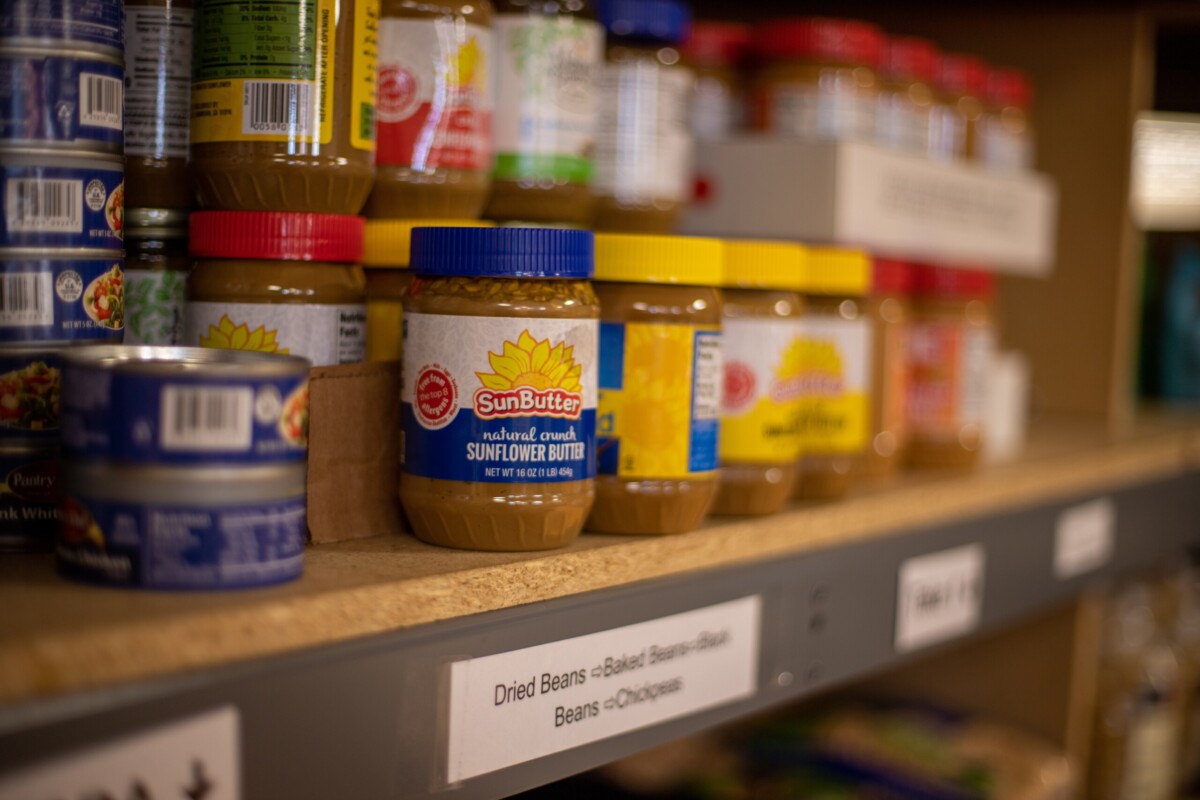 What must you keep top of mind to have meaningful conversations with donors who (you hope!) may contemplate a gift to your organization?
What must you keep top of mind to have meaningful conversations with donors who (you hope!) may contemplate a gift to your organization?
I’ve given you a hint within my question.
One word: meaningful.
And for a conversation to be meaningful, you have to speak in a language that resonates with the other person.
And what is it that resonates more strongly than just about any other emotion?
LOVE.
To get folks to “YES” you need to learn the meaningful language of love and apply it to gift planning.
The word philanthropy literally means, from the Greek, the feeling of love (philos) towards humankind (anthropos).
It’s not just about HOW people give, but WHY.
What is it about your organization’s values, as enacted, that your donor is most passionate about? How can you, as a philanthropy facilitator, make it easy for the donor to meaningfully express their feelings and passions?
Planning is involved, both on your end and the donor’s.
Passionate philanthropy is seldom a spur of the moment action.
No one just gets up one morning and decides to give away $10,000, $100,000 or $1 million.
Or let’s just stipulate it’s relatively rare.
Rather, would-be philanthropists consider how making a particular gift at a particular point in time may match their values and help them accomplish their objectives, personal and philanthropic.
Anyone who contemplates a major, or stretch, gift plans ahead.
For purposes of this gift planning article, let’s consider your audience to be prospective major (outright) and legacy (deferred) gift donors.
Let’s try an experiment.
Think of one donor with whom you’d like to have a deeper conversation about making a meaningful gift.
Thinking?
I’ll wait.
Got someone?
Okay.
Picture them in a place where you’d like to meet them.
Is it their home? Their office? Your office? A café? On the phone? Over Zoom?
Think about what’s realistic with this person, and what they might prefer.
Make sure this is an opportunity to talk one-to-one.
And not a group setting, like an event, volunteer activity or committee meeting. Those conversations can be useful, but they’re seldom deep.
Got an idea of who you’re speaking with and where you both are?
Good.
We’ll get back to this prospect in a moment.
First, let’s consider the language donors speak: philanthropy
Again, the literal translation of the word from the Greek – love of humankind— is how I most prefer to characterize folks who take a “voluntary action for the public good.” This latter phrase is how Robert Payton, the first full-time Director of the Lilly Center for Philanthropy at Indiana University, defined philanthropy. He saw philanthropists as people with a spiritual (not necessarily religious) calling. Philanthropy seen as a special kind of occupation — a vocation.
Philanthropy isn’t incidental; it’s part of these folks’ essence.
It’s action oriented, done absent coercion, and for the benefit of the public good.
Philanthropists are passionate lovers.
And for them to feel and express their love, it’s your job to connect them with their passions.
Fundamentally, philanthropy is about values.
Philanthropy begins with the values your organization enacts. Be they animal welfare, health and wellness, education, science, the environment, the arts, social justice, emergency aid, or any number of causes.
The values you enact will draw folks who share these values like a magnet.

There’s an entire universe of values out there (several examples depicted). Lots and lots and lots of “magnets.” Because there are so many of them, however, the force they exert on any one individual is relatively weak.
That’s where you come in! To point folks in the right direction.
Enter the process we’ve come to call “development.”
Your job is to work this process:
1. Begin with your tool box full of strategies designed to uncover folks who share the values you enact.
For new prospects and donors who give below your major gift amount, many of your strategies will be more ‘marketing’ (e.g., website, SEO, newsletters, advertising, social media, other publications; free events), less ‘fundraising’ (e.g., offline and online appeal approaches or fundraising events).
NOTE: I strongly encourage you not to silo the two “development” functions (aka marketing and fundraising “departments”). I argue they’re the same thing for nonprofit support purposes. At the least, they go together like peanut butter and jelly. Often, they’re designed to accomplish the very same outcomes. You don’t want to confuse your donors by having slightly different messages bombarding them from different places and perspectives.
Development is essentially all about creating positive customer experiences. Marketing and fundraising staff should be doing it together, not in silos. As Tom Ahern, leading authority on donor communications, notes:
“The heads of development and marketing have to accept that they are oxen pulling the same wagon, a wagon labeled ‘increasing community support’.”
2. Determine the best audiences for particular communications.
If your messages are generic they won’t be meaningful. So segment your audiences, determine who are your best prospects, and then identify the communication channels where you’re most likely to find these folks. Coordinate your content marketing and fundraising messaging across multiple channels. See what ensues.
3. Focus on your most likely partners — donors who passionately value what you do.
Begin with values and linkages to your organization, not money. Your best prospects are those with whom you’ve already got a foot in the door. They’re likely already affiliated with you in some way, as donors, volunteers, staff, members, and users of services.
When you uncover these folks, it’s time to begin the conversation.
Your job is to make the match between what donors care about and what you do.
Let’s get back to your conversation with your donor. The one for whom you’ve picked the right time and place to meet.
When speaking with likely donor prospects, you need to speak the language of philanthropy. “Philos” (love) + “Anthropos” (humankind). The language of love.
This is a time when you truly must connect. The most under-acknowledged major gift fundraising truism is simply this:
It’s about the relationship, not the “ask.”
If you ask too soon, you’ll get less than you could. Because you’ve made it more about the transaction than the relationship. Transactions only skim the surface.
If you want your donor to dig deep, they must be inspired. They must be moved.
They must trust you value what they value, and that you’ll collaborate with them to enact their passions, fulfill their dreams and help them find the meaning they seek.
Talk to prospective major donors about the legacy they’d like to leave.
Of all the questions I’ve ever asked donors, this is my favorite. There are all sorts of wonderful, generative questions you can ask. Just be sure they are open-ended questions (not yes/no) and about the types of impacts your particular donor may be interested in investing in.
Ask a lot of “what” and “how” questions.
-
What are you most proud of?
-
What do you think about ____________ ? (Ask them about a project or campaign; see if they think it’s something your organization should bedoing).
-
How did you get where you are today?
-
How would you approach next steps if we want to bring this project/campaign to fruition?
Shy away from asking “why,” as this can cause folks to become guarded and defensive.
“What” and “how” questions will unlock the “why.”
Are they doing this to ensure their values live on? Are they doing this to pay it forward to their children, grandchildren, and future generations? Are they doing it to pay it backwards to those who paved the way for them? If there’s something holding them back, what might it be?
You have a critical role in facilitating philanthropy.
Make a choice — to pay attention to, rather than ignore.
Through listening. Through empathy. Through putting yourself in someone else’s shoes.
Ask your prospects questions about themselves, listen to their answers, and reflect what you’ve heard back to them.
Be more concerned with their train of thought than yours. Whatever you do, don’t gloss over something they say because you’re thinking about something else and working up to an ask. The right time to ask will reveal itself. If you pay attention.
Now let’s consider impediments to philanthropy
Sometimes other people’s values get in the way.
No gift will be made unless you talk with your prospect about all of their priorities.
Because folks who are philanthropic, and want to do things to benefit others, will also want to benefit people they know. This may mean taking care of family members and/or helping a friend. It may mean they hear their parents’ or friend’s or colleague’s voice in their head telling them what they should or shouldn’t do.
A successful major or planned giving advisor/fundraiser will ask a prospect about their long-term priorities and influences.
Just listen and take everything in. Don’t judge. If they want to buy a yacht or travel around the world, that’s swell. If they want to leave each of their three children $10 million, and they have assets exceeding $100 million, that’s a swell plan. They can likely do that and make a passionate planned gift.
They won’t get to the gift part until they’ve articulated all their goals and talked it out.
Similarly, no gift will be made unless the donor feels secure financially.
If you talk to folks who are concerned about having sufficient funds for college tuitions, health care, aging parents, their own retirement, and so forth, you’ll need to assure them they can make a gift without negatively impacting any of these plans. Familiarize yourself with ways to help your donors give astutely. For instance, they’ll reap benefits from giving appreciated assets, giving using a charitable IRA rollover, or giving through a donor advised fund.
A successful major or planned giving advisor/fundraiser will ask a prospect about their assets and potential future expenditures.
I’ve talked to folks with hundreds of millions of dollars in assets who still felt financially insecure. Until they talked it out and we wrote things down on paper. Then they relaxed.
By addressing potential obstacles head on, you can get beyond them.
Let’s get practical: Getting donor prospects to reveal their story
There’s a lot of talk among nonprofits about the magic of storytelling. And it’s certainly important to tell a compelling emotional story that makes your donor want to jump into the narrative and become the hero who gives the story a happy ending.
But the most important story you can tell is not your organization’s story. Or a story of one of the beneficiaries of your mission.
The most important story major and planned giving fundraisers can help tell is the donor’s personal story.
Think about what this means.
It means helping donors look in the mirror and see the person they’d most like to see.
So… let’s get back to that donor prospect you were envisioning meeting with earlier.
What do you know about your donor’s personal story?
What open-ended questions could you ask to learn more?
The more you know, the more you can help your donor find their own happy ending. Through philanthropy.
Want to Learn More Effective Strategies for Generating Passionate Philanthropy?
 Get lots more major gift fundraising secrets in my 4-volume Major Gifts Playbook . Whether you’re new to major gifts, or are simply seeking to do a more effective job, these guides will help you with lots of hands-on practical advice. Everything you need is here — from A to Z — in one, nice, tied-together package.
Get lots more major gift fundraising secrets in my 4-volume Major Gifts Playbook . Whether you’re new to major gifts, or are simply seeking to do a more effective job, these guides will help you with lots of hands-on practical advice. Everything you need is here — from A to Z — in one, nice, tied-together package.
People have told me they consider it their “bible,” and it has become their ‘go to’ fundraising resource. It will be a reference you will turn to for years to come. And if you’re not happy for any reason, you have my no-questions-asked, 30-day, 100% refund guarantee.
I have to say I’m loving the materials! I want to drop everything else and focus on these steps — they give me hope. I’ve wanted to get a major gifts program started here, but … with your help, I can make major gifts a focus for this year. I’m determined.
– Kathy Aultz, Executive Director, Douglas County Historical Society
I’ve read through the playbook and know it’s going to be a huge help. I’ve already used volume 2 to design an exercise we will do with the Board at their next retreat. I love the way you’ve framed their involvement in fundraising!
— Susan Mattei, Stoneleigh-Burnham School
#Nonprofit #Gift #Planning #Language #Love










